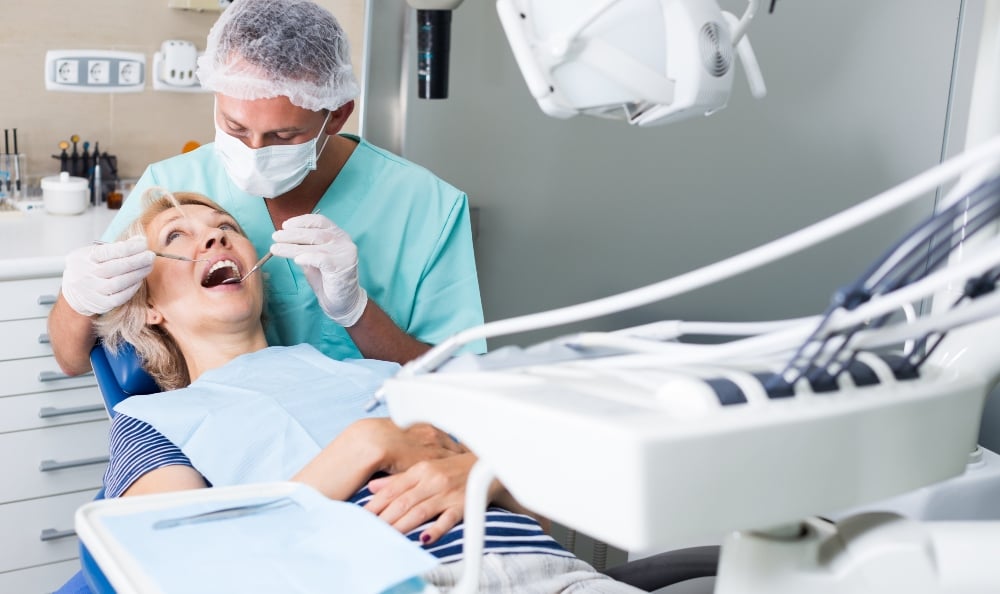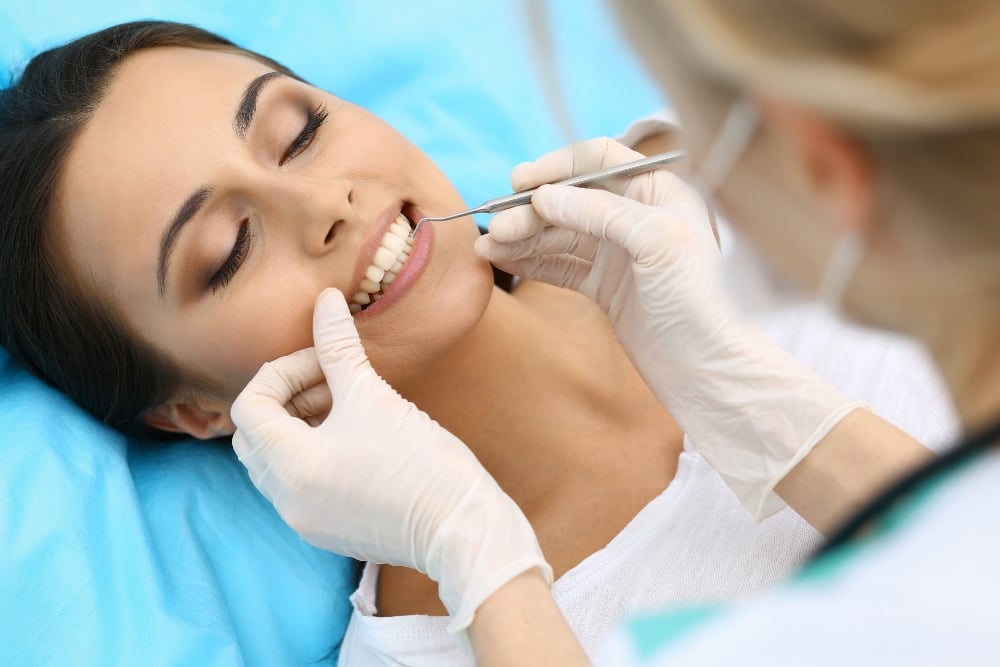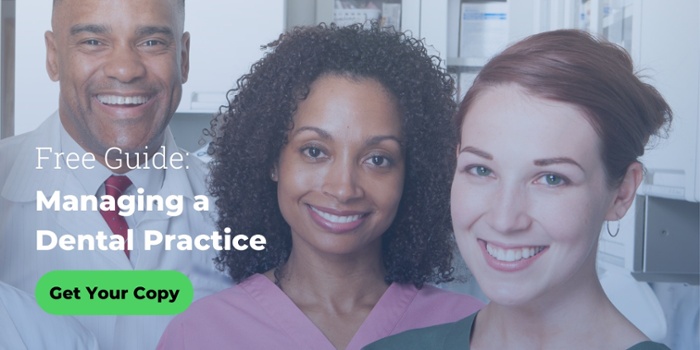Posted by Amy Carbone on Apr 2, 2019 9:30:00 AM
Your patients may come to see you for a variety of reasons, both planned and unexpected. As a professional dedicated to relieving and preventing the discomfort of others, the last thing that you may want to do is end up in pain yourself.
Explore this list of 7 ways that you may be able to avoid injury (and potentially help protect your staff from injury) at work.
Tip #1. Pay Attention to Your Posture
According to the Occupational Safety and Health Administration (O.S.H.A.), awkward or static postures and the repetitive movements of patient care may be reason medical workers have more musculoskeletal injuries than any other industry.
Consider finding a comfortable, dynamic position and switching sides so that you may avoid making repetitive (rotational) movements. This strategy is recommended in Dental Ergonomics to Combat Musculoskeletal Disorders: A Review, a 2015 report by the International Journal of Occupational Safety and Ergonomics*, as a possible way to avoid poor muscle patterns which may eventually cause chronic muscular issues and carpal tunnel syndrome.

Tip #2. Revise Your Working Strategy
According to a Swedish study* presented in the same report, dentists may also be putting themselves at risk for upper extremity disorders by holding their arms elevated for long periods of time. The International Journal of Occupational Safety and Ergonomics* suggests changing the way you work to avoid these injuries, by practicing four-handed dentistry with the help of your assistants.
Tip #3. Take Breaks
No matter how busy you are, you may want to find time to take short breaks. Since your body may be extended for long periods of time while working over a patient, consider taking time to look up toward the ceiling, or take short walks around your office, which researchers explain may give your neck and suboccipital muscles a chance to rest from that static position.
Tip #4. Exercise and Eat Well
Exercise may be a leading method of preventing MSDs in dental professionals according to large U.S. Army occupational surveys as reported in the International Journal of Occupational Safety and Ergonomics*. Consider finding ways to get yourself moving after sitting for most of the day, whether that’s by going to the gym, taking a walk, or playing a sport. You might want to try to give your other muscles a workout, too. Making sure you eat well throughout the day may also help in injury and illness prevention, even if you only have time for small snacks to boost your energy levels.
Tip #5. Determine Other Potential Risks in Your Practice Area
There may be other potential risks facing you (or your employees) during the workday, beyond injuries caused by posture and positioning. Consider observing employees during a typical day to assess their habits and determine likely hazards.

According to the National Center for Disease Control, sharps injuries may be incredibly common among healthcare professionals, potentially exposing individuals to bloodborne pathogens like hepatitis A, hepatitis B, and hepatitis C, as well as the human immunodeficiency virus (HIV).
Understand how to safely mitigate these risks with O.S.H.A. safety protocols. You or your staff may also be inadvertently exposed to radiation if the proper procedures are not being followed when patient images are taken.
Tip #6. Monitor the Entire Office Space for Hazards
When you’re not with patients, consider keeping an eye out for problem areas in your office that may lead to injury, such as loose carpeting or slippery floors. When you walk around a corner, are there obstructed views in heavily trafficked areas that could cause people to collide?
Making yourself familiar with O.S.H.A. safety standards applicable to dental practices may be an essential and required part of running your own practice.
Tip #7. Document the Risks As Well As Safety Protocols and Share With Others
Consider making everyone in your office aware of potential risks and what to do in case someone is injured. This information should be in employee safety manuals and training guides. By making everyone aware of potential office risks, they may be able to better prevent accidents and injuries.
When you see people make potentially unsafe mistakes, consider correcting them so that the unsafe practice does not become an ingrained bad habit. Training new employees in your office safety protocols, as well as regularly reminding all employees of safety practices, may also help to mitigate accidents.
The Occupational Safety and Health Administration (OSHA) notes that developing a culture of safety in a place of business can mitigate the risks to both staff and patients. If you consider following these tips, it might be easier for yourself and your staff to avoid getting injured while at work.
About Treloar & Heisel
Treloar & Heisel is a premier financial services provider to dental and medical professionals across the country. We assist thousands of clients from residency to practice and through retirement with a comprehensive suite of financial services, custom-tailored advice, and a strong national network focused on delivering the highest level of service.
Treloar & Heisel and Treloar & Heisel Risk Management are divisions of Treloar & Heisel, LLC.
Insurance products offered through Treloar & Heisel and Treloar & Heisel Risk Management.
Treloar & Heisel, LLC. and its divisions do not offer legal advice. Please consult a professional for advice in this area.
*Arpit Gupta, Anil V. Ankola & Mamata Hebbal (2013) Dental Ergonomics to Combat Musculoskeletal Disorders: A Review, International Journal of Occupational Safety and Ergonomics, 19:4, 561-571, DOI: 10.1080/10803548.2013.11077005


